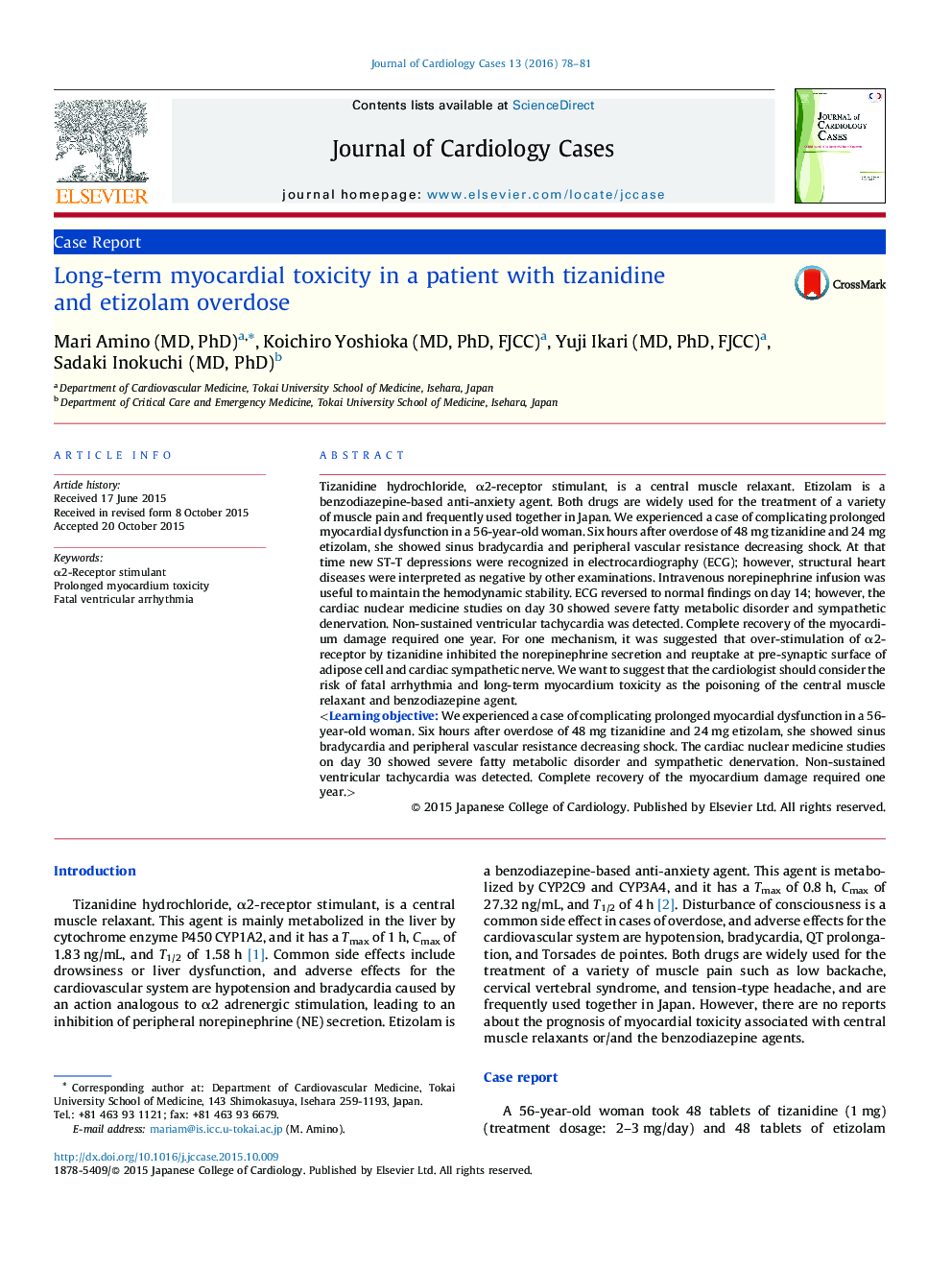| Article ID | Journal | Published Year | Pages | File Type |
|---|---|---|---|---|
| 5984435 | Journal of Cardiology Cases | 2016 | 4 Pages |
Tizanidine hydrochloride, α2-receptor stimulant, is a central muscle relaxant. Etizolam is a benzodiazepine-based anti-anxiety agent. Both drugs are widely used for the treatment of a variety of muscle pain and frequently used together in Japan. We experienced a case of complicating prolonged myocardial dysfunction in a 56-year-old woman. Six hours after overdose of 48 mg tizanidine and 24 mg etizolam, she showed sinus bradycardia and peripheral vascular resistance decreasing shock. At that time new ST-T depressions were recognized in electrocardiography (ECG); however, structural heart diseases were interpreted as negative by other examinations. Intravenous norepinephrine infusion was useful to maintain the hemodynamic stability. ECG reversed to normal findings on day 14; however, the cardiac nuclear medicine studies on day 30 showed severe fatty metabolic disorder and sympathetic denervation. Non-sustained ventricular tachycardia was detected. Complete recovery of the myocardium damage required one year. For one mechanism, it was suggested that over-stimulation of α2-receptor by tizanidine inhibited the norepinephrine secretion and reuptake at pre-synaptic surface of adipose cell and cardiac sympathetic nerve. We want to suggest that the cardiologist should consider the risk of fatal arrhythmia and long-term myocardium toxicity as the poisoning of the central muscle relaxant and benzodiazepine agent.
